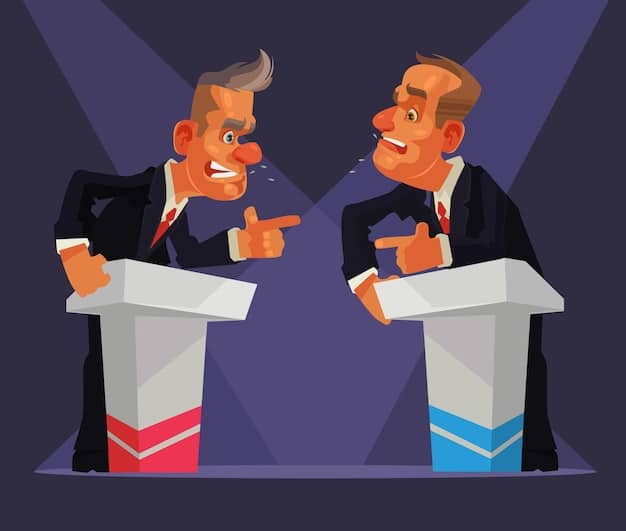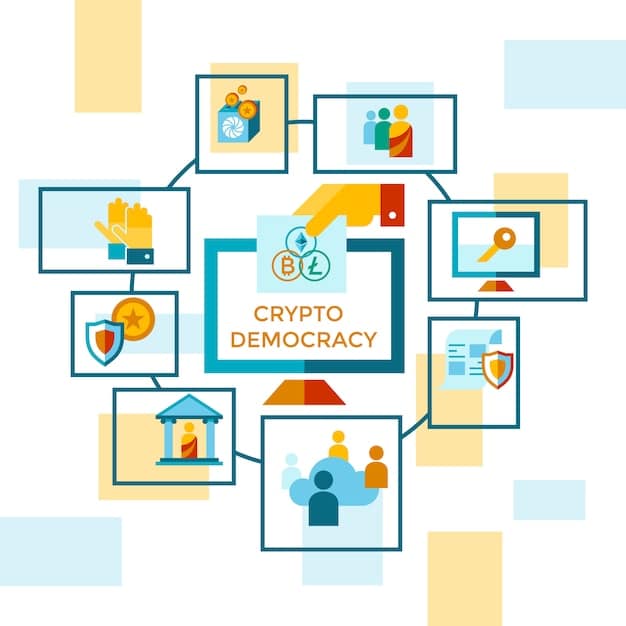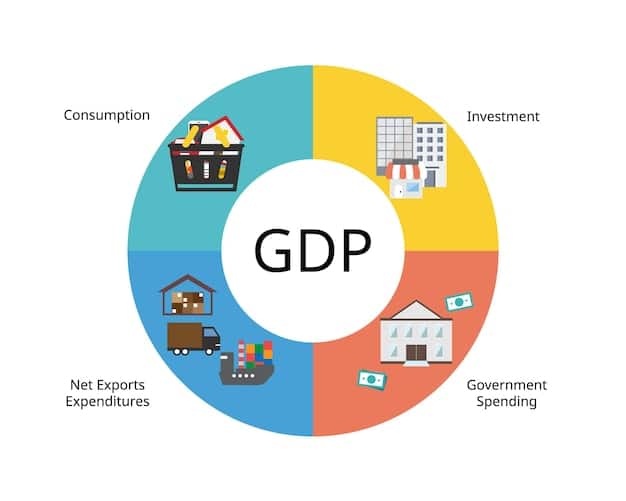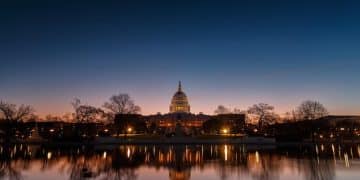The Role of PACs in Funding Political Campaigns: An In-Depth Analysis

Political Action Committees (PACs) significantly influence U.S. political campaigns by funneling financial contributions to candidates, potentially shaping policy outcomes and raising concerns about transparency and fairness in elections.
The influence of money in politics is a topic of ongoing debate, and one of the key players in this arena are Political Action Committees (PACs). These organizations play a significant role in funding political figures’ campaigns, and understanding their impact is crucial for anyone interested in the U.S. political landscape.
Understanding the Basics of Political Action Committees (PACs)
To fully grasp the role of PACs in political funding, it’s essential to understand their fundamental structure and purpose. PACs are essentially organizations created to raise and spend money to elect and defeat candidates. They operate under specific regulations and guidelines.
What Exactly are PACs?
A Political Action Committee (PAC) is defined as any organization in the United States that raises and spends money to elect and defeat political candidates. Most PACs represent business, labor, or ideological interests.
The Legal Framework Governing PACs
PACs are regulated by federal and state laws, primarily through the Federal Election Commission (FEC). These regulations dictate how much money PACs can donate to candidates and how they must disclose their donors. This framework is in place to ensure some level of transparency and accountability.
- Contribution Limits: PACs face limits on how much they can donate to a candidate per election.
- Disclosure Requirements: PACs must report their donors and expenditures to the FEC.
- Independent Expenditures: Understanding the line between direct contributions and independent expenditures is crucial in analyzing PAC influence.
Understanding these foundational elements of PACs is the first step in analyzing their multifaceted role in political campaigns and their potential impact on democratic processes. The legal framework seeks to balance free speech rights with the need for transparent and fair elections.

The Evolution of PACs in American Politics
The landscape of campaign finance has changed dramatically over time, and PACs have been at the forefront of this evolution. To truly understand their present influence, we must examine their historical roots and how they have adapted to changing regulations and political climates.
The Genesis of PACs
The modern PAC emerged in the mid-20th century, largely in response to campaign finance regulations aimed at limiting direct contributions from individuals and corporations. Labor unions were among the first to recognize the potential of pooling resources to influence elections.
Key Legislative Milestones
Key pieces of legislation, such as the Federal Election Campaign Act (FECA) of 1971 and its subsequent amendments, have significantly shaped the operation of PACs. These laws established disclosure requirements and contribution limits, which in turn influenced how PACs strategized their financial activities.
- Buckley v. Valeo: The Supreme Court’s decision in Buckley v. Valeo had a profound impact on campaign finance law, particularly regarding independent expenditures by PACs.
- The Rise of Super PACs: The emergence of Super PACs after the Citizens United decision further altered the landscape, allowing for unlimited independent expenditures.
- Adaptation and Influence: Over time, PACs have adapted to new legal interpretations and found innovative ways to influence political outcomes.
Tracing the evolution of PACs offers critical context for assessing their current impact. Their growth and adaptation mirror the ongoing struggle to balance free speech, transparency, and fairness in campaign finance.
How PACs Impact Political Campaigns and Elections
The primary function of PACs is to influence elections, and their strategies for doing so are varied and sophisticated. To analyze their impact, it’s necessary to examine how they allocate funds, whom they support, and the overall effect on electoral outcomes.
Financial Contributions to Candidates
PACs provide direct financial support to candidates, often targeting those who align with their interests or who hold key positions in relevant committees. These contributions can provide a significant boost to a campaign’s resources.
Independent Expenditures and Advocacy
In addition to direct contributions, PACs engage in independent expenditures, such as running ads supporting or opposing candidates. These expenditures are not coordinated with the campaigns themselves, allowing PACs greater latitude in their messaging.
- Targeting Strategies: PACs often target specific demographics or geographic areas to maximize their impact.
- The Role of Messaging: The messages conveyed through PAC-funded ads can significantly influence public opinion.
- Electoral Outcomes: Examining election results in relation to PAC spending can provide insights into their effectiveness.
Understanding how PACs allocate their resources and the strategies they employ is vital in gauging their influence on political campaigns and elections. Their financial power can shape narratives and influence voter behavior.
The Potential Benefits and Criticisms of PACs
PACs are a subject of ongoing debate, with proponents and critics offering differing perspectives on their role in politics. A balanced analysis requires examining both the potential benefits and the inherent criticisms associated with PAC activity.
Arguments in Favor of PACs
Some argue that PACs provide a platform for individuals and groups to express their political views and support candidates who represent their interests. They can also serve as a counterbalance to other powerful interests in politics.
Concerns About Influence and Corruption
Critics argue that PACs give undue influence to wealthy donors and special interests, potentially leading to corruption or policy decisions that benefit a select few. The reliance on PAC money can also create a sense of obligation among politicians.
- Transparency Issues: The complexities of campaign finance law can make it difficult to track the true sources of PAC funding.
- Level Playing Field: The ability of PACs to spend unlimited amounts on independent expenditures raises questions about fairness in elections.
- Public Trust: The perception that politicians are beholden to PAC donors can erode public trust in government.
A comprehensive assessment of PACs requires acknowledging both their potential benefits and the valid concerns raised about their influence on political processes. The debate over PACs highlights the enduring challenges of campaign finance reform.

The Role of Super PACs and 501(c)(4) Organizations
In recent years, the rise of Super PACs and 501(c)(4) organizations has further complicated the campaign finance landscape. These entities operate under different regulations than traditional PACs, and their influence is rapidly growing.
Super PACs: Unlimited Spending
Super PACs, also known as independent expenditure-only committees, can raise and spend unlimited amounts of money to support or oppose political candidates, as long as they do not directly coordinate with the campaigns.
501(c)(4) Organizations: Dark Money
501(c)(4) organizations are nonprofit groups that can engage in political activities but are not required to disclose their donors. This “dark money” can make it difficult to track the true sources of influence in elections.
- Citizens United Decision: The Supreme Court’s decision in Citizens United paved the way for the rise of Super PACs and 501(c)(4)s.
- Regulatory Loopholes: The complex regulations governing these entities allow for significant ambiguity and potential abuse.
- Impact on Elections: The influx of money from Super PACs and 501(c)(4)s has transformed campaign finance and heightened concerns about transparency.
Understanding the role of Super PACs and 501(c)(4) organizations is essential for comprehending the modern campaign finance environment. Their influence is reshaping political discourse and raising fundamental questions about democracy.
The Future of PACs and Campaign Finance Reform
Looking ahead, the debate over PACs and campaign finance is likely to continue. Potential reforms could reshape the role of money in politics and redefine the boundaries of free speech and transparency.
Proposed Reforms and Legal Challenges
Various reforms have been proposed, including stricter disclosure requirements, limits on independent expenditures, and public financing of elections. However, many of these proposals face legal challenges based on First Amendment grounds.
The Role of Technology and Social Media
The rise of technology and social media is also changing the landscape of campaign finance, with online fundraising and digital advertising becoming increasingly important. This presents new challenges for regulators.
- Grassroots Funding: Online platforms have made it easier for campaigns to raise money from small donors, potentially reducing reliance on PACs.
- Digital Advertising: The lack of transparency in online advertising raises concerns about the spread of misinformation and foreign interference in elections.
- The Future of Democracy: The ongoing debate over campaign finance reform reflects fundamental questions about the role of money in a democratic society.
The future of PACs and campaign finance reform is uncertain, but the need for a fair and transparent political process remains paramount. The choices made in the coming years will have a profound impact on the future of American democracy.
| Key Point | Brief Description |
|---|---|
| 💰 PACs’ Purpose | Raise and spend money to influence elections. |
| 📜 Regulations | Subject to federal and state laws, contribution limits. |
| 📊 Influence | Can shape policy outcomes and voter behavior. |
| ⚖️ Controversies | Concerns about transparency and undue influence. |
Frequently Asked Questions (FAQs)
▼
The main goal of a PAC is to raise and spend money to elect and defeat political candidates. They aim to influence elections and policy outcomes.
▼
Federal law sets limits on how much money PACs can contribute to a candidate per election. These limits are subject to change based on election cycles.
▼
Independent expenditures are funds spent by PACs to support or oppose candidates without direct coordination with their campaigns. This allows PACs greater freedom in messaging.
▼
Unlike traditional PACs, Super PACs can raise and spend unlimited amounts of money to support or oppose political candidates, provided they do not coordinate with the campaigns.
▼
PACs face criticism for potentially giving undue influence to wealthy donors and special interests, raising concerns about transparency and fairness in elections.
Conclusion
In conclusion, Political Action Committees (PACs) have become deeply embedded in the fabric of American politics. Their intricate role in financing political campaigns raises critical questions about fairness, transparency, and the extent to which money shapes policy. As campaign finance laws evolve, understanding the influence and impact of PACs remains essential for informed civic engagement and the pursuit of a more equitable democratic process.





